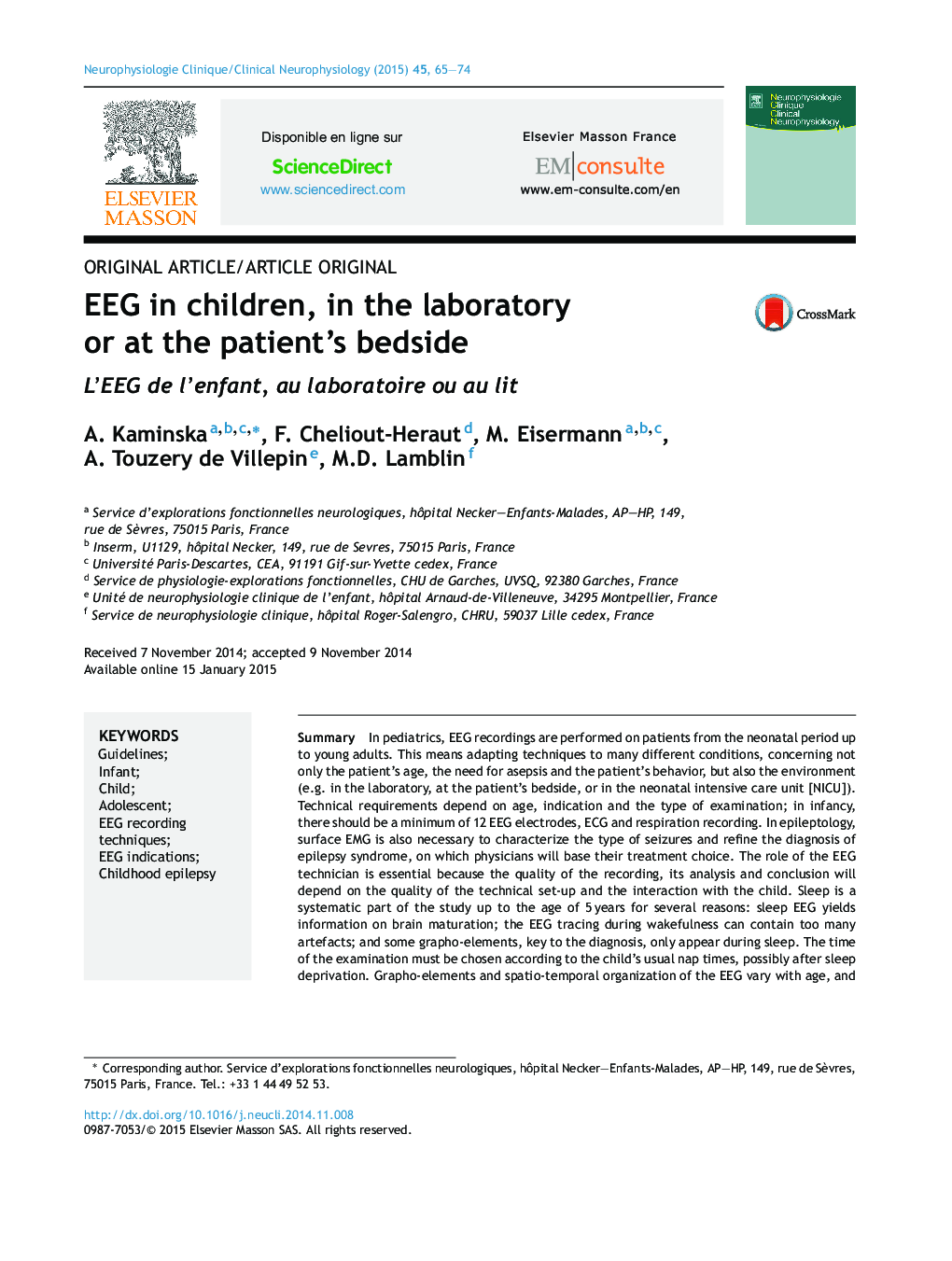| Article ID | Journal | Published Year | Pages | File Type |
|---|---|---|---|---|
| 3082024 | Neurophysiologie Clinique/Clinical Neurophysiology | 2015 | 10 Pages |
SummaryIn pediatrics, EEG recordings are performed on patients from the neonatal period up to young adults. This means adapting techniques to many different conditions, concerning not only the patient's age, the need for asepsis and the patient's behavior, but also the environment (e.g. in the laboratory, at the patient's bedside, or in the neonatal intensive care unit [NICU]). Technical requirements depend on age, indication and the type of examination; in infancy, there should be a minimum of 12 EEG electrodes, ECG and respiration recording. In epileptology, surface EMG is also necessary to characterize the type of seizures and refine the diagnosis of epilepsy syndrome, on which physicians will base their treatment choice. The role of the EEG technician is essential because the quality of the recording, its analysis and conclusion will depend on the quality of the technical set-up and the interaction with the child. Sleep is a systematic part of the study up to the age of 5 years for several reasons: sleep EEG yields information on brain maturation; the EEG tracing during wakefulness can contain too many artefacts; and some grapho-elements, key to the diagnosis, only appear during sleep. The time of the examination must be chosen according to the child's usual nap times, possibly after sleep deprivation. Grapho-elements and spatio-temporal organization of the EEG vary with age, and normal variants and unusual aspects are quite wide for any given age; this is why a physician experienced in pediatric EEG should perform the interpretation. This chapter concerns EEG performed in infants, children and adolescents, its technical aspects according to age and indications (general pediatrics, emergency, epilepsy).
RésuméRéaliser un EEG en pédiatrie, c’est enregistrer des enfants dès la période néonatale jusqu’à des jeunes adultes. Cela veut dire s’adapter à des conditions d’examen très différentes, d’âge mais aussi d’environnement (au laboratoire, au lit du patient, en unité de soins intensifs), d’asepsie et de comportement. Les techniques d’installation dépendent de l’âge, de l’indication et du type d’examen ; le minimum chez le nourrisson étant de 12 électrodes EEG, un ECG et la respiration. En épileptologie, l’enregistrement de l’EMG de surface est indispensable pour caractériser le type de crises et le diagnostic de syndrome épileptique dont va dépendre le choix du traitement. Le rôle du technicien est primordial car de la qualité de l’installation et de l’attention qu’il va porter sur l’enfant vont dépendre de la qualité de l’enregistrement, l’analyse et la conclusion de l’examen. Le sommeil est systématique jusqu’à l’âge de 5 ans : le tracé de veille peut être trop artéfacté et certains grapho-éléments clés du diagnostic n’apparaissent qu’au cours du sommeil. L’heure de l’examen doit être choisie en fonction des habitudes de l’enfant pour obtenir un sommeil de sieste, parfois après privation. Les grapho-éléments et l’organisation spatio-temporelle de l’EEG évoluent avec l’âge et les limites de l’« inhabituel » sont larges pour un âge donné ; c’est pourquoi l’interprétation doit être réalisée par un médecin expérimenté pour l’EEG pédiatrique. Ce chapitre concerne les EEG réalisés chez les nourrissons, les enfants et les adolescents, les aspects techniques en fonction de l’âge et des indications (pédiatrie générale, urgences, épilepsie).
